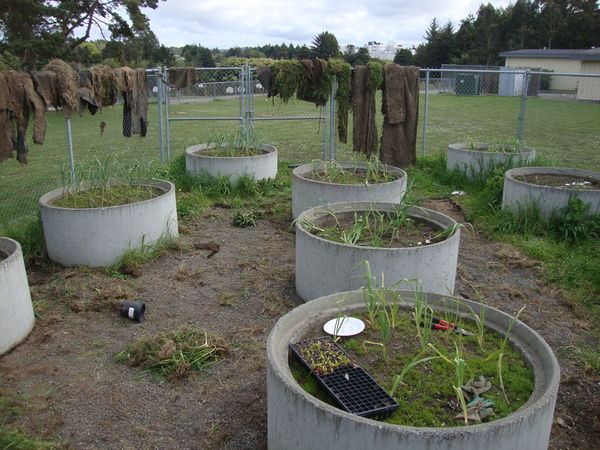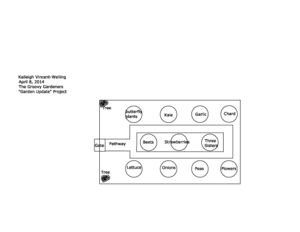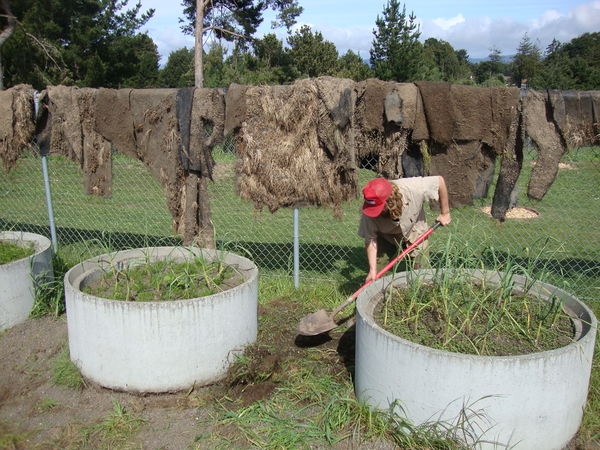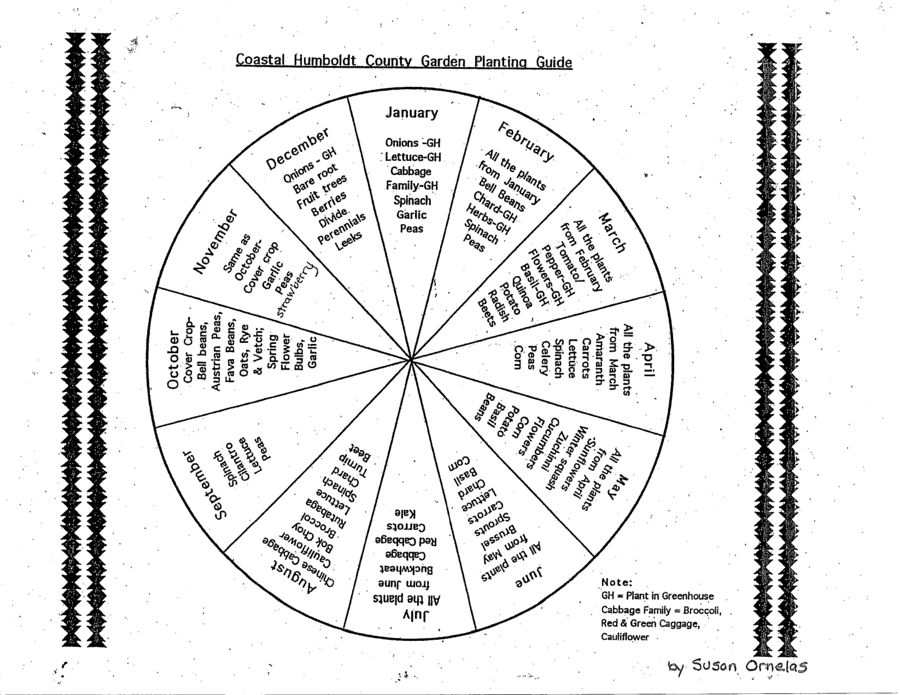(→Costs) |
|||
| Line 48: | Line 48: | ||
''' | '''Landscaping Fabric''' | ||
First, | First, landscaping fabric that had been laid across the garden area's ground about ten years ago was ripped up by our team. In order to mow the grass inside of the gated garden area, this fabric had to go. In place of overgrown weeds, we planted flowers throughout the entire garden space. The planted marigolds, (...). Removing the fabric gives the garden a cleaner look as well as further lowers the maintenance needed for the garden. If the garden is more aesthetically pleasing, it will in theory, invite more students, teachers, and community members to upkeep it and place it a higher level of importance within the school. | ||
[[Image:DSC00727.JPG|thumb|upright=2|left|'''Figure 3''' Ripping up | [[Image:DSC00727.JPG|thumb|upright=2|left|'''Figure 3''' Ripping up Landscaping Fabric (Photo by: T. Hilden)]] | ||
'''Upcycled Path''' | '''Upcycled Path''' | ||
An upcycled pathway made by broken pieces of materials such as | An upcycled pathway made by broken pieces of materials, such as concrete and granite, have been incorporated around the garden area to add to aesthetics as well as to encourage students not to step on the flowers growing around the garden space. The upcycled path creates a more aesthetically pleasing garden space, and it categorizes the different planters. This organization will increase order within the garden space, further increasing safety within the garden as well. | ||
'''The Plants in the Planters''' | '''The Plants in the Planters''' | ||
Revision as of 17:46, 18 April 2014
Abstract
This page discusses Garden Update, a project that involves updating Zane Middle School's garden to better promote its integration into the school system. The Groovy Gardeners, a team of four students, designed Garden Update with Lonny Grafman's Introduction to Design class at Humboldt State University.
Background
The Groovy Gardeners is a team of four engineering students attending Humboldt State University and enrolled in Lonny Grafman’s Intro to Design course for Spring 2014. Included in this team is: Kaileigh Vincent-Welling, Terran Hilden, Patrick Hassett, and Robert Williams. In this semester-long design project, these four students were given the task of updating a local middle school’s garden. Our client, Zane Middle School is a school of currently 620 sixth-to-eighth graders and is located in Eureka, California. Prior to the Garden Update project, Zane's garden contained twelve large planters growing only garlic. The garden was inaccessible and unused by students and staff. Our client wanted our team to appropriately update their garden to a new, fairly self-sustaining, low-maintenance garden with curriculum that can be easily integrated into classes. This project was designed in order to establish a stronger connection between the client and their garden.
Problem statement and criteria
In meeting with Bernie Levy, a teacher at Zane Middle School who has shown much interest in the garden, the issue at hand was clear. Zane's garden prior to this project was unsuccessful at integrating itself into classrooms, growing a diversity of plants, being tended to, and being occupied and available. In knowing this, our team made a criteria list that is necessary for the success of the "Garden Update", shown below in Table 1. This table categorizes each criteria next to the weight based on a scale of 1-10, with 10 being the most important criterion.

| Criteria | Weight |
|---|---|
| Low Maintenance | 10 |
| Accessibility/Use | 9 |
| Timing/Productivity | 7 |
| Safety | 7 |
| Cost | 7 |
| Integration into Classrooms | 6 |
| Aesthetics | 6 |
Description of final project
The Garden Update's final project includes updating different aspects of the garden that was at Zane prior to Spring 2014. We will discuss and relate these aspects. Shown are Autocad drawings depicting the updated garden's final look.

Landscaping Fabric
First, landscaping fabric that had been laid across the garden area's ground about ten years ago was ripped up by our team. In order to mow the grass inside of the gated garden area, this fabric had to go. In place of overgrown weeds, we planted flowers throughout the entire garden space. The planted marigolds, (...). Removing the fabric gives the garden a cleaner look as well as further lowers the maintenance needed for the garden. If the garden is more aesthetically pleasing, it will in theory, invite more students, teachers, and community members to upkeep it and place it a higher level of importance within the school.

Upcycled Path
An upcycled pathway made by broken pieces of materials, such as concrete and granite, have been incorporated around the garden area to add to aesthetics as well as to encourage students not to step on the flowers growing around the garden space. The upcycled path creates a more aesthetically pleasing garden space, and it categorizes the different planters. This organization will increase order within the garden space, further increasing safety within the garden as well.
The Plants in the Planters Before we started this project there were multiple planters of garlic and now there is only one. We have different varieties of kale, chard, strawberries, squash, beans, peas, quinoa, corn, lettuce, onions, and (...ADD IN EVERYTHING WE PLANT)growing in the other 11 planters. Each planter has different plants, strategically grown based off of companion plant methods to better promote growth. This plant companionship method means that we are growing plants that benefit each other in what each gives or promotes in the soil, so that both plants are helping each other grow in a companionship.
Irrigation System
In order to allow the garden to thrive, we needed to make sure there was an easy way to get the plants water. The irrigation system we decided upon (...)
Curriculum/Information

In order to better persuade teachers and faculty members to incorporate the garden into their classrooms we have researched curriculum for the teachers to give them ideas to use. Not only have we provided lesson plans for the teachers, but we have also included charts, tables, and information about how to upkeep the garden. Information includes when to plant, when to harvest, how much to water certain plants, and other useful aspects to gardening. We have collaborated all of this information in a binder kept with teacher Bernie Levy, in hope that we will be able to further motivate the school to put their newly updated garden to use.
Costs
Hours The Groovy Gardeners combined and added up the total amount of hours spent on this design project. The total amount of hours spent on the Garden Update is ______ hrs. Figure # portrays how many hours our team spent on each section of the design process, shown below.
INSERT OUR PIE CHART HERE
Materials
Materials used for this project consisted mainly of the different types of seeds and starts we decided upon planting. Fortunately, there was a portion of donated plants we were able to collect and use, still being represented in Table # below. The total amount of money spent was $###, which meant an estimate of $### spent by Zane Middle School.
| Quantity | Material | Source | Cost ($) | Total ($) |
|---|---|---|---|---|
| 1 | Pack of Quinoa Seeds | Seed Exchange | 0.00 | 0.00 |
| 1 | Flat of Chard Starts | Bayside Park Farm | 0.00 | 0.00 |
| 1 | Pack of Kale Seeds | Seed Exchange | 0.00 | 0.00 |
| 1 | Flat of Kale Starts | Bayside Park Farm | 0.00 | 0.00 |
| 1 | Strawberry Starts | Farmer's Market | 10.00 | 10.00 |
| 7 | Varieties of Flower Seeds | Seed Exchange | 0.00 | 0.00 |
| 2 | Car Loads of Broken Concrete | Alves Inc. | 0.00 | 0.00 |
| 2 | Bucket of Paint | UNKNOWN | ? | ? |
| 1 | Storage Box (Shed) | ? | ? | ? |
| 1 | Irrigation System | ? | ? | ? |
| Total Cost | $10.00 | |||
Testing Results
Testing out our final project can come only with time. If the garden is to be a success, then it will remain to thrive and be in a stable, healthy state for years upon years to come. Right after the project is finished, all we can do is hand it over to the school for maintenance and hope for the best. A few different testable areas of the garden could be checked currently including the upcycled path. We made sure that the pieces of materials are firmly in place and even. It is a walkable pathway that is safe and appropriate for the use of students. Also, the irrigation system can be tested currently. (...)
How to
The garden Zane Middle School initially had was not in an ideal state. In order to update the area to our finalized project, there were multiple steps that needed to be taken. The figures below represents the main steps taken regarding the different aspects of the garden.
Discussion and next steps
Overall, the Garden Update resulted in a finished project our group was proud of (...) The next steps? Well, it is up to the school to upkeep their new garden and to integrate it into their classes and school system. If there are more people such as parents and teacher who are passionate about gardening, hopefully it will inspire and motivate others to give a hand to taking care of the plants and space inside of its gated area. (...)
References
See Help:Footnotes for more. Template:Reflist